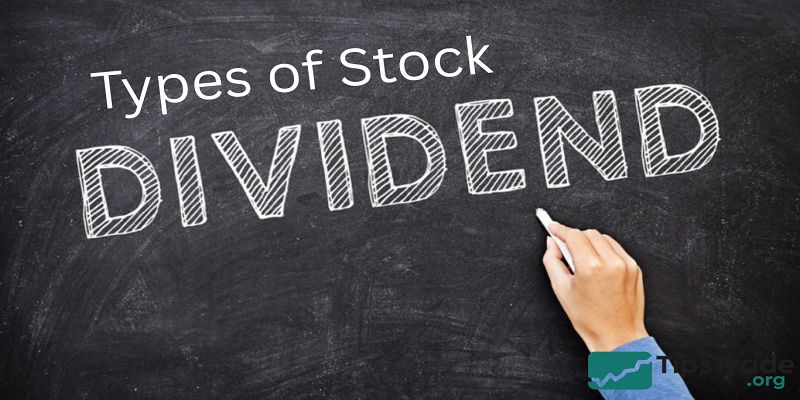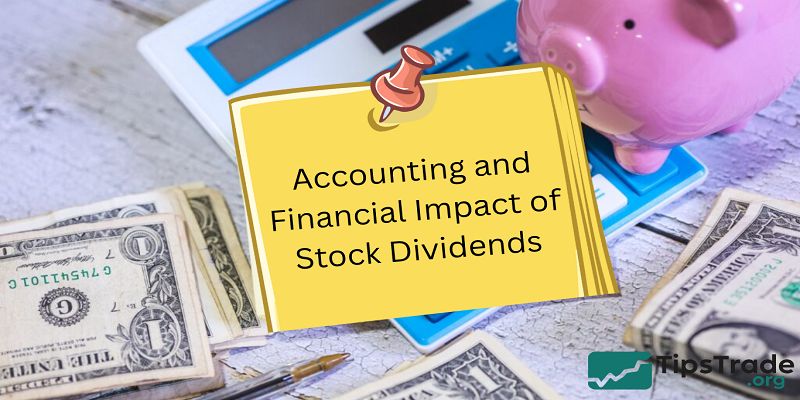Stock dividends are payments to shareholders made in the form of additional shares of a company’s stock rather than cash. Stock dividends allow companies to reward investors while conserving cash reserves, and shareholders benefit by receiving more shares that might appreciate in value over time. Through this article, let’s explore the details more deeply together at https://tipstrade.org/.
How Stock Dividends Work

The Process of Issuing Stock Dividends
The decision to issue stock dividends begins with the Board of Directors. Once approved, the process involves several key dates:
- Declaration Date – the company announces its decision to distribute stock dividends.
- Record Date – shareholders of record on this date are eligible to receive additional shares.
- Ex-Dividend Date – if you purchase shares on or after this date, you won’t be entitled to the stock dividend.
- Payment Date – the new shares are officially credited to shareholders’ accounts.
This process ensures transparency and equal treatment of investors, maintaining trust in the financial markets.
Price Adjustment After Stock Dividends
After stock dividends are distributed, the share price adjusts downward to reflect the increased number of shares. However, the total investment value remains unchanged.
Example:
- You own 100 shares trading at $50 each (total value = $5,000).
- The company declares a 10% stock dividend.
- You receive 10 new shares, bringing your total to 110.
- The adjusted price per share = $5,000 ÷ 110 = $45.45.
Your total value is still $5,000. Stock dividends don’t create instant wealth, but they increase the number of shares you own, which can amplify long-term gains if the stock appreciates.
Types of Stock Dividends

Small Stock Dividends (<20–25%)
- When a company issues less than 20–25% of its outstanding shares as dividends, it is classified as a small stock dividend.
- These are recorded on the company’s financial statements at fair market value.
Example:
- A company with 1 million shares issues a 5% stock dividend (50,000 new shares). If the market price is $40, the dividend is valued at $2 million (50,000 × $40).
Large Stock Dividends (>20–25%)
- When the issuance exceeds 20–25% of outstanding shares, it’s considered a large stock dividend. In this case, shares are recorded at par value rather than market value.
Example:
- A company with 10 million shares at a par value of $1 declares a 50% stock dividend. It issues 5 million new shares, adding $5 million to common stock accounts.
- Large stock dividends share similarities with stock splits but differ in accounting treatment.
Stock Dividends vs Other Corporate Actions
Stock Dividends vs. Cash Dividends
- Stock dividends: Provide additional shares, conserving company cash.
- Cash dividends: Offer immediate income to shareholders but reduce company cash reserves.
Investors seeking income often prefer cash dividends, while growth-oriented investors may benefit more from stock dividends that compound long-term value.
Stock Dividends vs. Stock Splits
Both actions increase the number of shares and adjust share prices, but:
- Stock dividends: Reclassify retained earnings into common stock, impacting equity structure.
- Stock splits: Purely technical, with no effect on retained earnings or shareholders’ equity.
In practice, companies use stock splits to make shares more affordable, while stock dividends signal profit reinvestment.
Advantages and Disadvantages of Stock Dividends

Benefits for Companies
- Preserve cash for reinvestment in growth projects.
- Signal confidence to investors about long-term prospects.
- Increase liquidity by making shares more widely available.
Benefits for Investors
- More shares without additional cost.
- Potential compounding effect if stock prices rise.
- Tax deferral in some jurisdictions, since taxes apply only upon sale.
Drawbacks and Risks
- Dilution of EPS (Earnings per Share).
- Short-term price drop after adjustment.
- No immediate cash income, which may disappoint income-focused investors.
Accounting and Financial Impact of Stock Dividends

Financial Statement Treatment
- Small stock dividends: Recorded at market value.
- Large stock dividends: Recorded at par value.
Both affect shareholders’ equity by reallocating retained earnings but do not change total assets.
Impact on Key Financial Ratios
- EPS decreases as shares increase.
- ROE (Return on Equity) may fluctuate slightly.
- Book Value per Share declines since equity is spread across more shares.
Understanding these shifts is crucial for analysts assessing company performance post-dividend.
Market and Investor Reactions
Investor Psychology and Market Perception
- Stock dividends often create positive sentiment, suggesting management believes in future growth.
- However, if issued too frequently, they may raise concerns that the company lacks sufficient cash to pay traditional dividends.
Short-Term vs. Long-Term Impact
- Short-term: Stock price usually drops proportionally to the dividend.
- Long-term: Strong companies can recover quickly, and the additional shares may yield higher cumulative returns.
Smart investors differentiate between cosmetic actions and genuine growth signals.
Real-World Examples of Stock Dividends

Global Case Studies
- Apple: Has used both stock dividends and splits to maintain accessibility for small investors.
- Microsoft: Balances between cash and stock dividends to satisfy both income and growth investors.
- Tesla: Frequently uses stock splits and dividends to keep shares affordable, fueling investor enthusiasm.
Examples in Vietnam
- Companies like Vietcombank, FPT, and Hoa Phat regularly issue stock dividends to reinvest earnings while maintaining shareholder loyalty.
- Lesson: Stock dividends can be a growth signal in expanding industries, but investors should verify that they are not merely masking liquidity issues.
Taxation and Regulations on Stock Dividends
- United States (IRS): Stock dividends are generally not taxable when received but become taxable capital gains upon sale.
- Vietnam: Stock dividends are not taxed at issuance but are subject to capital gains tax when sold.
- Other markets: Vary, but most jurisdictions follow the principle of deferring tax until realization.
Investors should always check local tax laws before planning strategies around stock dividends.
Investment Strategies with Stock Dividends

When to Hold Shares After Stock Dividends
- Strong profitability and ROE.
- Operating in a high-growth industry.
- Transparent management with consistent performance.
When to Sell Shares After Stock Dividends
- Persistent EPS dilution.
- Over-reliance on stock dividends instead of cash flow.
- Weak recovery in share price after adjustments.
Strategic investors analyze company fundamentals rather than relying solely on dividend announcements.
Conclusion
Stock dividends are a strategic tool that allows companies to reward shareholders while preserving capital for expansion. For investors, they offer the chance to accumulate more shares and benefit from long-term compounding.

